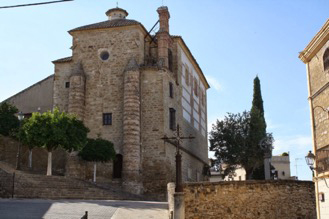
Arjona
Arjona is a rural town located geographically in the center of the «North Countryside» of the province of Jaén, south of Andújar. Its location, in a landscape populated with olive trees and on a hill 458 m high, makes it visible from different points of the province. Arjona presents itself as “the balcony of Jaén countryside”.
Arjona oozes history, especially Iberian and Roman. Its past has roots in the Bronze Age, becoming an “Oppidum Ibero” that would live after the Roman conquest, one of the most glorious periods as an Albense Urgavonense municipality.
The Middle Ages transformed the urban physiognomy of the city and improved its defensive system. Arjona reached its maximum splendor in the first half of the 13th century, when Ibn Al-hamar declared his hometown independent, and self proclaimed Sultan of the Taifa of Arjona, the germ of the future Nasrid Kingdom of Granada. The Christian Reconquest in 1244 at the hands of Fernando III, marks the beginning of a new stage, where the constructions of religious temples, today a fundamental part of its heritage, take center stage.
The “archaeological excavations” carried out in the search for relics to turn Arjona into a Christian pilgrimage center, caused the destruction of towers, defensive enclosures and the Alcazar itself. Finally, the discovery of the bones found in 1628 of the holy martyrs Bonoso and Maximiano, exalts the religious fervor transforming Arjona into an Expiatory Shrine.
Tourism Portal of Arjona Downhill
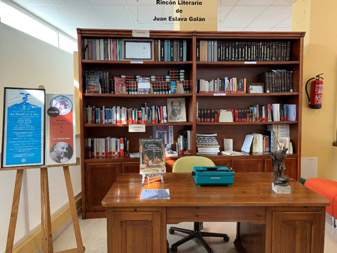
Juan Eslava’s literary corner
A place of special interest and very directly linked to the writer is the “Juan Eslava Literary Corner” in the Municipal Public Library. In it you can find all the works published by the author and ordered by publication date. The works have been donated in their entirety by Eslava Galán and mostly signed. Along with the literary works, the corner has the table in the former office of Juan Eslava Galán, the same one that, together with the typewriter, were used by the aforementioned author for the writing of the Planeta Award “In Search of the Unicorn. The literary…

The Templar Tombstone
The Templar Tombstone, the element that gives the novel its title and that generates its plot, is a marble stone that is located in an unexpected place that the author reveals at the end of the novel. (…) He was on the third rung when he discovered her. There it was, embedded in the wall to the right, under the inclined plane of the second flight of stairs. (…) The Tombstone has the enigma of the Table of Solomon engraved on its external face, by means of a geometric mandala,, which hides the encrypted key to the dominion of the…
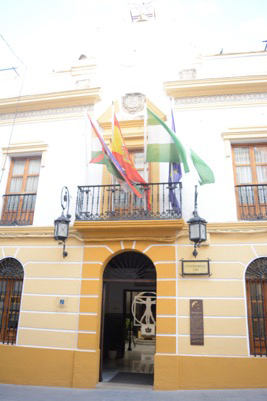
Arjona Town Hall
The building that houses the Arjona Town Hall is a traditional Andalusian-style house from the 19th century that Juan Eslava Galán describes very precisely: (…) The Arjona Town Hall was an Andalusian-style house with a bright, beautiful inner patio with marble flooring and surrounded by columns. Along the walls, a beautiful tile plinth ran halfway up. There were pots of aspidistras in the corners; on the walls, notice boards and large, faded aerial photographs of the town. At the end there was a marble staircase that led to the upper floor. (…) The Arjona Town Hall is one of the…

Crypt of Baron of Velasco
This family funerary crypt, neo-Byzantine style, was built by order of Fernando Ruano Prieto, Baron of Velasco, under the patronal Chapel of his family in the Church of Saint John. The design, by architect Antonio Flórez Urdapilleta, highlights its resplendent golden tesserae, the apse presided over by a Pantocrator, surrounded by four cherubs and three statues sculpted in Carrara marble by the Valencian José Capuz, representing the Theological Virtues (Faith, Hope and Charity). The most unique thing is its ingenious movement mechanism through rails to access the mortuary niches. These were hidden behind the statues and were activated when someone…
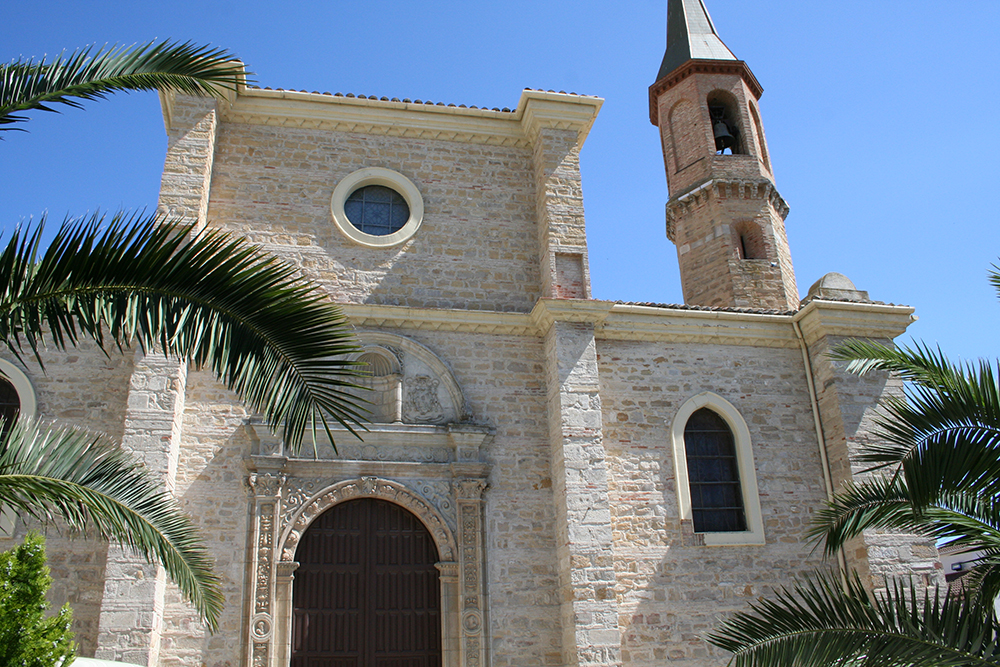
Church of Saint John the Baptist
The Church of Saint John the Baptist is located where most likely a Roman temple dedicated to Bacchus used to be, and later became a Jewish synagogue. In fact, the church is located in the old Jewish quarter of the city. The temple, of late Gothic style, began its construction in the first third of the 16th century. Since then it has undergone several renovations, being practically destroyed in 1936 as a result of the events of the Spanish Civil War. Its typical Plateresque façade stands out, its beautiful and stylized octagonal tower and the rich Sagrario, made by the…
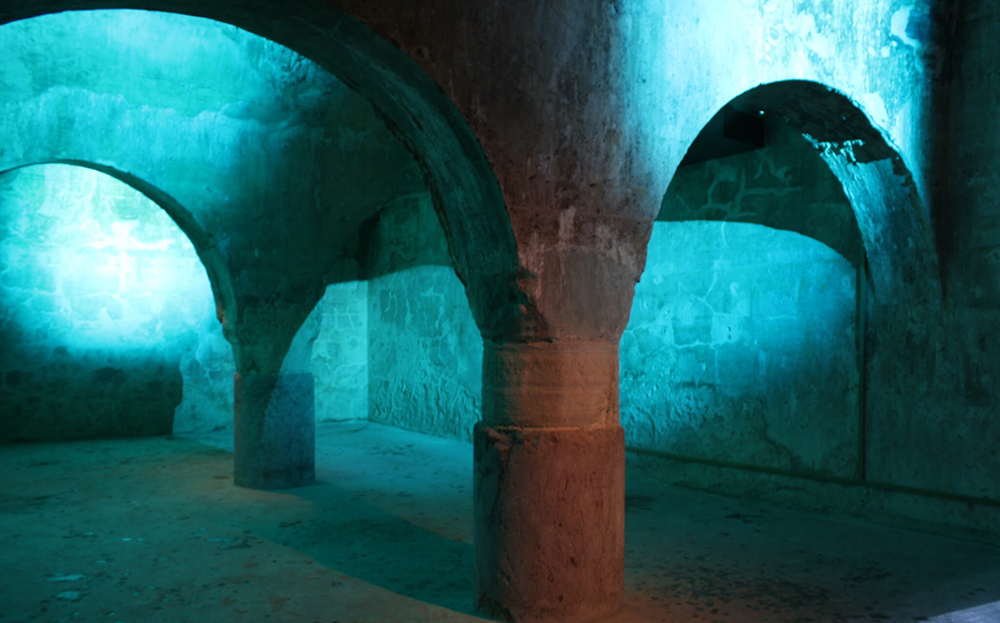
Almohade Water Tank
This water tank, built in the Almohad period, is the oldest building preserved in today’s Arjona and is located under what would have been the Main Mosque of the Alcazaba de Aryuna. Its rectangular-plan structure is supported by three semicircular vaults, raised on Roman alabaster pedestals, reminiscent of the presence of the Roman temple of Urgavo, dedicated to the Emperor Caesar Augustus. The water tank´s function was to contain water to supply the population of Aryuna, which is why the interior is not decorated, its walls being lined with mortar. After a restoration and musealization carried out in 2008, with…
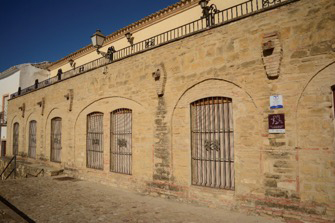
Juan Eslava Galán Museum of Arts and Customs
The Juan Eslava Galán Museum of Arts and Customs is located in the old San Miguel Hospital (also called Casa del Rey as Ibn Alhamar is believed to have been born here) and shares a building with the Arjona Archaeological Museum. This patrimonial landmark is not linked to the work The Templar Tombstone in itself, but to Juan Eslava Galán, who, in addition to giving the Museum its name, donated most of the collection on display. Among the most representative elements on display in the museum, we should highlight the original throne used in the recording of the film Lawrence…
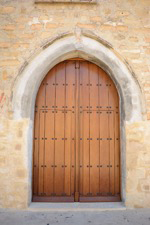
The Templar Bafomet
If we stop to contemplate the austere external ornamentation of the Church of Santa María del Alcázar, we can observe how a face carved in stone appears on one of its side facades as the only and striking decorative motif, the so-called Baphomet of Arjona. Bafomet or Baphomet is a term originally used to describe an idol that the Templar Knights were accused of worshiping and which was later incorporated into different occult and mystical traditions. Its symbolism is usually a head with a split beard and inclined on both sides and / or with two profiles that give rise…

Church of Santa María del Alcázar
The robust Church of Santa María stands majestically in Santa María Square, on the remains of the old Main Mosque of the Alcázar de Aryuna. It was transformed into a Christian temple after the conquest of Arjona by the Christian troops led by King Fernando III in 1244. In The Templar Tombstone this temple is of great importance because on one of its facades there is one of the famous Templars Baphomet, a very significant element in the plot. The Church of Santa María is a completely austere Renaissance building with external ornamentation, with stylistic approaches to Elizabethan Gothic art.…
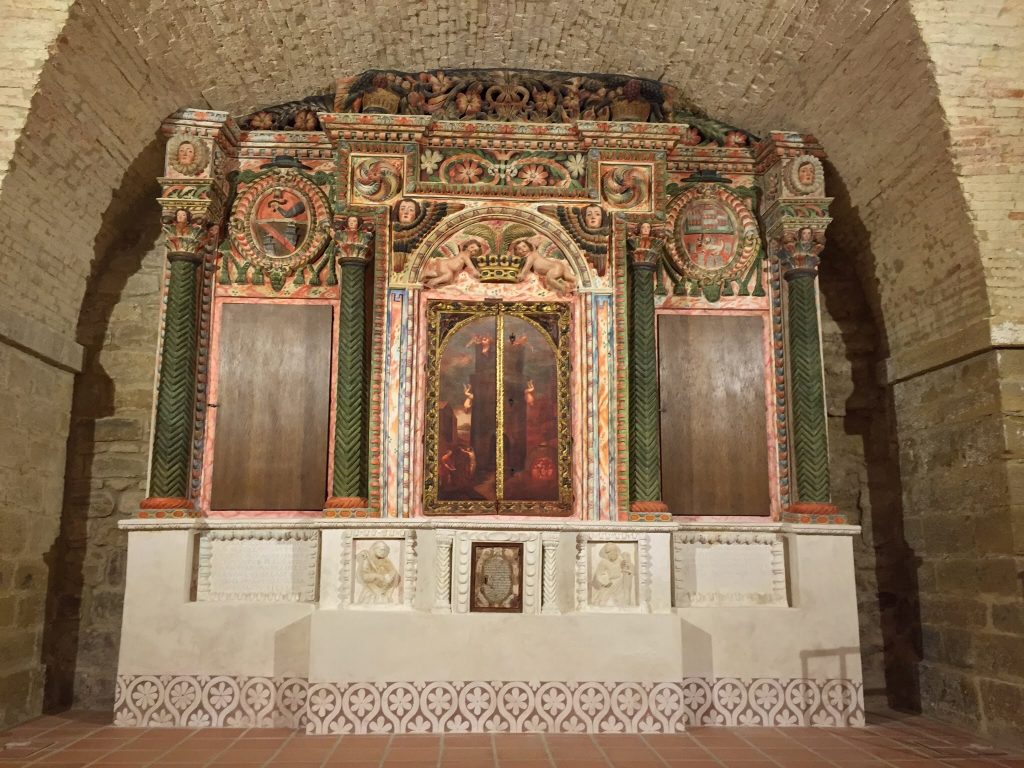
Sanctuary of the Sacred Relics
The Sanctuary of the Sacred Relics (The Saints´Sanctuary or Sanctuary of Alcázar in The Templar’s Tombstone), is a classicist temple dating from the 17th century, the work of the architect Juan de Aranda Salazar. The building rises on the ashlars of the Mocha tower (one of the towers of the old Alcázar) and resolves the unevenness of the land it is built on, structuring on two floors with differentiated accesses through an imposing exterior staircase. On the lower floor, like a crypt, there is a Spanish-American colonial baroque altarpiece sometimes used as an auditorium for many different events. Eslava Galán…

Santa María square
The Plaza de Santa María corresponds to part of the space occupied by the old Alcázar de Aryuna, of which barely the antemural remains, an imposing canvas of a sloping wall based on large masonry of pre-Roman origin, heir to a vast defensive system that would have its maximum splendor in Islamic times (S. IX). The square acts as an excellent viewpoint of the fertile and extensive countryside of Jaén and its spaciousness makes it an ideal space to start the literary route. A square, which the author himself describes in this way in The Templars and the Table of…



